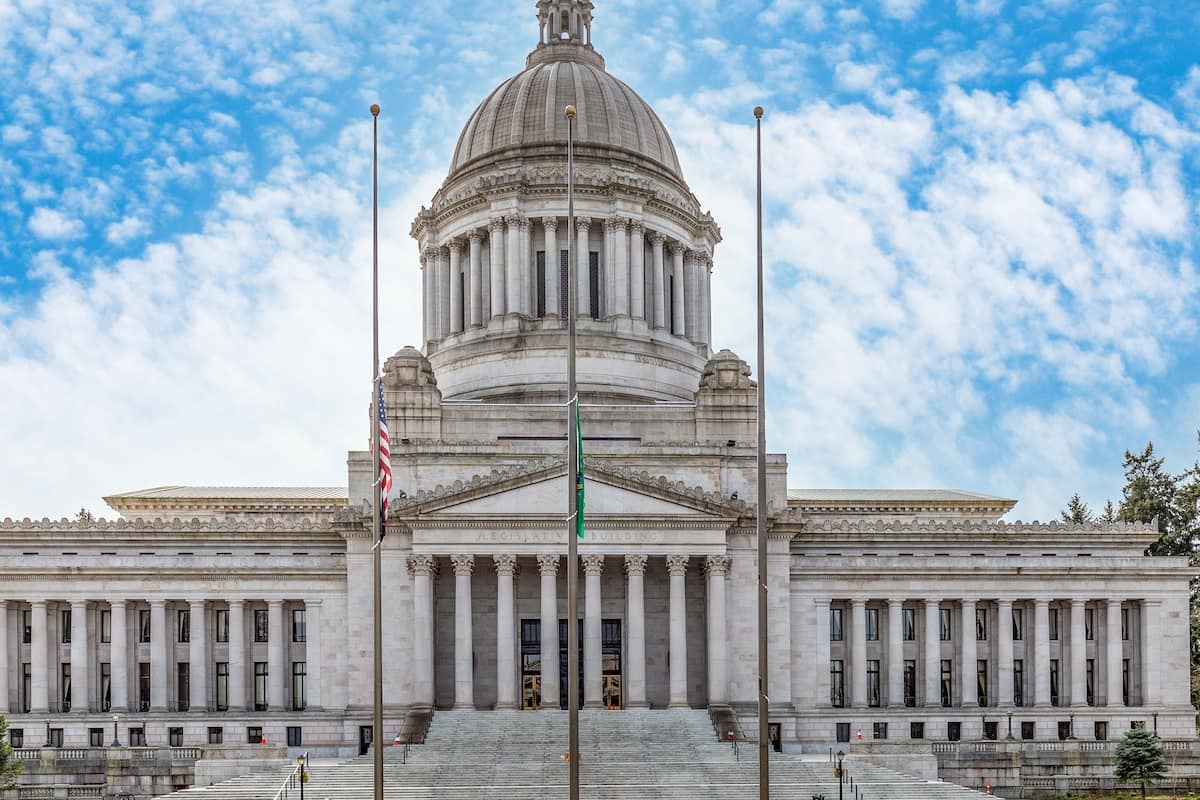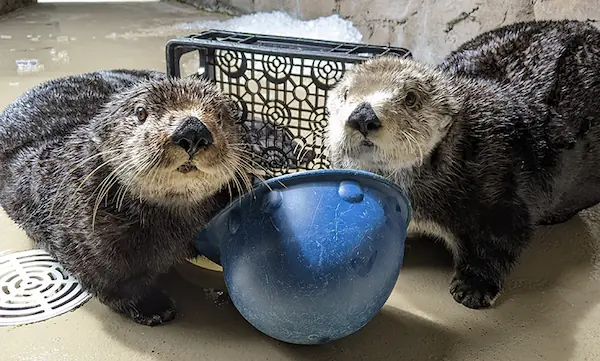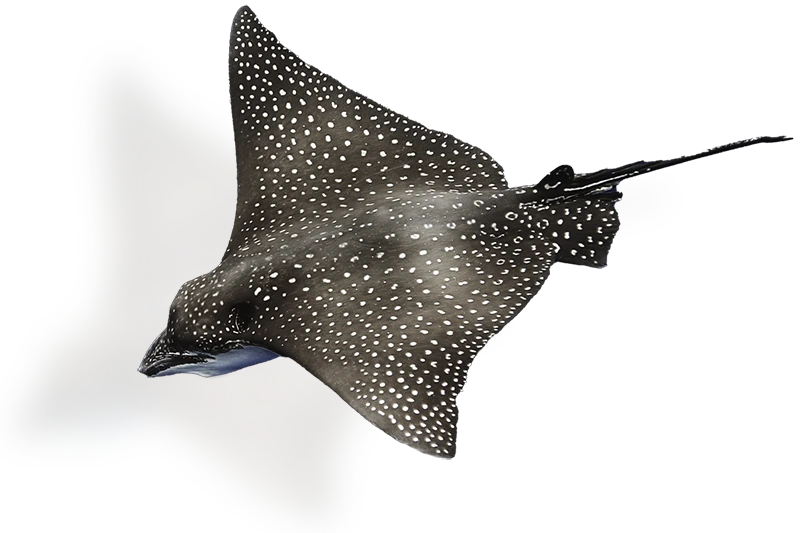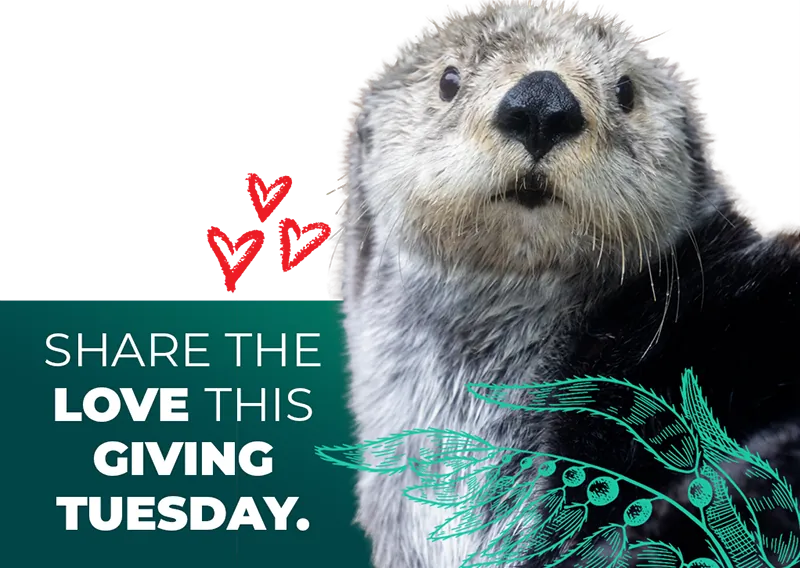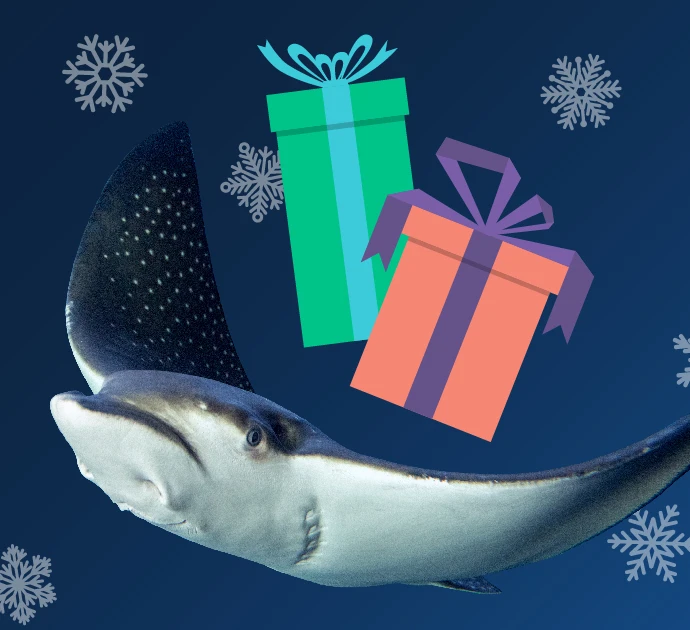Category: Take Action
What is biodiversity and why is it important to us?
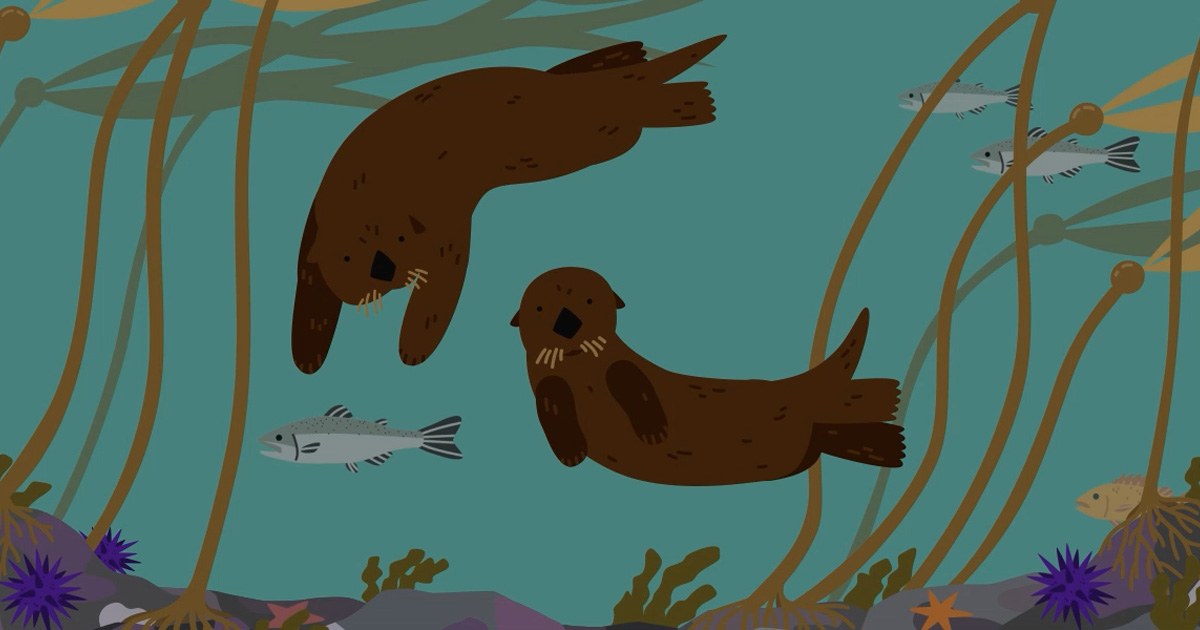
If you took a time machine back to four billion years ago, life would look very different. Because all life forms would look nearly the same! All life on Earth shares a common ancestor, but billions of years of genetic mutations took us from microscopic organisms to millions of unique species, adapted to live all around the world. This wide variety of life is known as biodiversity.
Biodiversity has three components: genes, species and ecosystems. All living things have genes, which guide how the organism will look and behave. Genes mutate, and these changes can impact how well organisms survive in their environment. Over time, genetic changes build up, eventually leading to distinct species. Many different species and nonliving environmental factors—including water, minerals, currents, wind and temperature—interact to function as an ecosystem, where they fulfill different roles. The global ecosystem of all Earth’s living beings is called the biosphere.
For example, an organism’s genes determine whether it grows a shell to become a mussel, sprouts many tentacles like a sea anemone or grows wings like a black oystercatcher. In a rocky shore ecosystem, these species all coexist. Each fills a different role, like how mussels filter water, anemones provide other organisms shelter and black oystercatchers maintain balance in the populations of their prey species.
Biodiversity's importance
A diverse ecosystem with many different species is more likely to survive natural and human-made catastrophes like floods, storms, wildfires and marine heat waves. The members of that ecosystem offer a wide range of possible strengths and defenses. Each adaptation represents a potential way to help the ecosystem bounce back from challenges.
Species within an ecosystem are connected, which means a threat to any one species could have surprisingly widespread effects.
Sea otters represent a classic example of the dangers of disregarding biodiversity. During the 18th and 19th centuries, hunters and fur traders nearly drove sea otters to extinction. The decline in sea otters led to an explosion of sea urchins, their prey, since there were no longer enough sea otters to fill the role of predator. The urchins overgrazed kelp beds, which are vital habitats for many marine species, including rockfish and salmon. Sea otter populations are on the rebound thanks to conservation efforts, but recovery of these ecosystems is a lengthy process.
Think of an ecosystem like a car. A car is made up of many different parts, some of them small or unseen. If your car were to lose one bolt, would you still want to drive it? What about two bolts or a headlight or even a whole tire? How many parts would you be willing to lose before you no longer feel safe?
Marine species face many human-caused threats, including overfishing, climate change, habitat loss and pollution. Losses of marine biodiversity have brought huge changes to ecosystems. And since Earth’s ecosystems connect to create the biosphere, losses of biodiversity could mean planet-wide changes, affecting us all.
Billions of people—including you!—rely on the ocean for food, medicine and other resources. Changes in marine ecosystems, like the continuous problem of overfishing, could threaten these resources. In addition, your job might be connected to the sea. Your favorite vacation spot or even your home might be located near a body of water that is vulnerable to coastal erosion, dangerous storms or species losses.
Threats to biodiversity could mean the loss of culturally important species or activities, especially for Indigenous communities. Some endangered marine species—including sea otters and southern resident orcas—are considered culturally significant by people native to the Pacific Northwest. Indigenous peoples have stewarded coastal areas since time immemorial and continue to lead efforts to protect marine biodiversity. Their traditional knowledge is vital to conservation work.
Our biodiversity initiatives
The Seattle Aquarium is involved in many conservation projects that aim to protect and restore biodiversity in the Salish Sea and beyond. Among our longest-running projects are seasonal and annual surveys of Washington’s sea otter population. The more information we have on sea otters, the better we can understand what conditions they need to thrive.
We are also involved in recovery projects for Indo-Pacific leopard sharks, kelp and xʷč’iłqs, which is the Lushootseed word for pinto abalone. The Seattle Aquarium values the expertise of Indigenous people and has partnered with tribes, Indigenous leaders, and local communities in Washington State and in the Coral Triangle on research and conservation efforts for these species.
Celebrating biodiversity at the Ocean Pavilion
Our new Ocean Pavilion expansion will bring the jaw-dropping biodiversity of the Coral Triangle to Seattle. Coral reefs are hubs of biodiversity. They support about a quarter of known marine life, despite taking up less than 1% of the seafloor. Known as the “Amazon of the ocean,” the Coral Triangle is a reef system in the Indo-Pacific that is considered the most biologically diverse marine ecoregion in the world. It contains 75% of known coral species, including at least 15 endemic species that are found nowhere else on the planet.
The Ocean Pavilion is designed to celebrate the biodiversity of Earth’s one ocean. The design process included cross-cultural collaboration between local Coast Salish and urban Indigenous leaders and the Aquarium’s design and architectural team.
When the building opens this summer, you’ll have the chance to come face to face with over 100 different tropical marine species. Through the Ocean Pavilion’s publicly accessible oculus window, you’ll see the beauty of a healthy reef ecosystem just by walking by. And native plantings on the rooftop and public artwork will highlight the relationships between Coast Salish communities and shoreline ecosystems.
By surrounding yourself in the ocean’s bounty of life—whether on a visit to the Aquarium or a trip to the shore—you can appreciate your part in the global web of biodiversity. And the role you can play in protecting it.
FareWHALE to the 2024 legislative session: Marine critters give us this session’s poli-sea updates
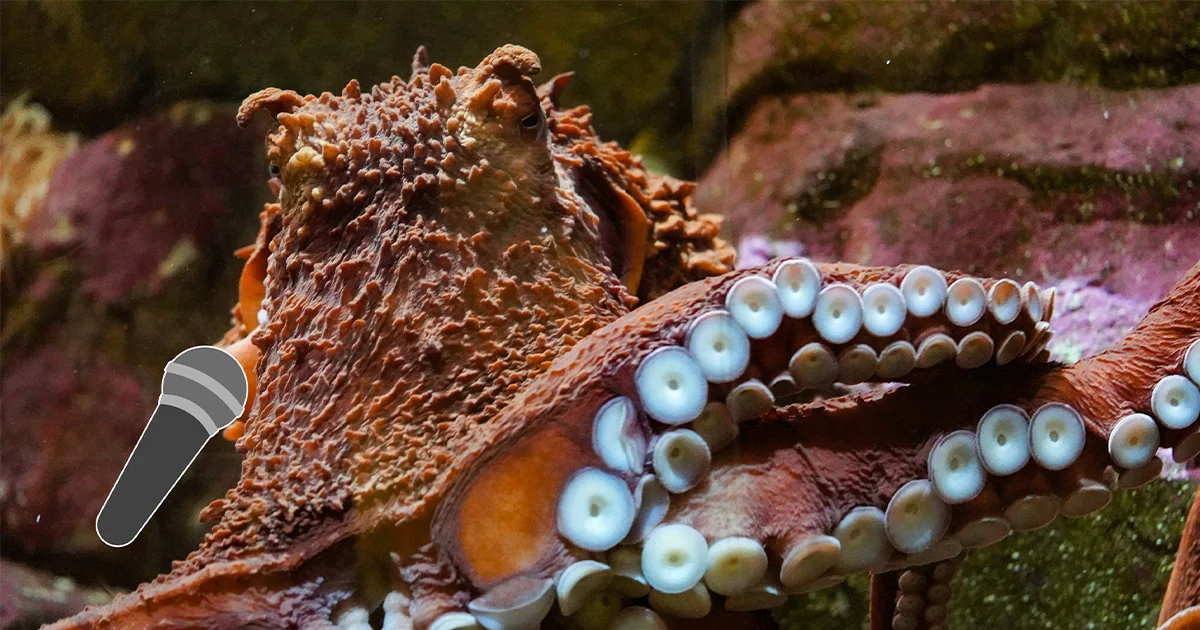
The short 2024 Washington legislative session has ended. We could tell you about how the Seattle Aquarium worked with our partners on multiple bills to protect the ocean and advance environmental justice. But we’d rather bring you an extra special edition of the post-session report and go live with marine animals who share their “poli-SEA” updates.
What was your favorite bill from this legislative session?
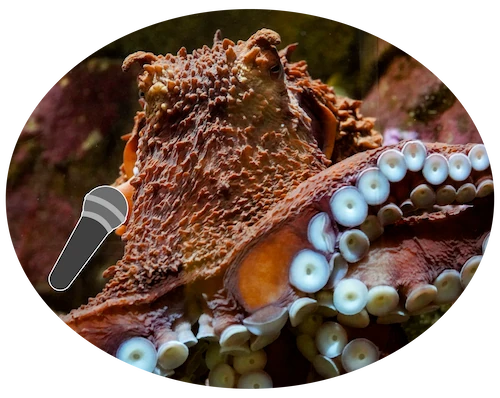
Giant Pacific octopus: Unlike me, this one’s a no-brainer. House Bill 1153, which prohibits commercial octopus farming in Washington waters, passed. And I’m as happy as a clam, as humans say. Like other octopuses (and apparently human teenagers), I like my alone time and need things to keep my brain active, so being in a crowded aquaculture operation would be hard on me. There are no octopus farms in Washington waters currently, and the state legislature took proactive measures to help keep me and my fellow octopuses safe in the future.
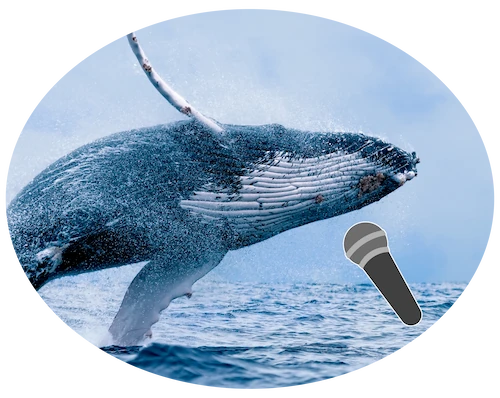
Humpback whale: Did you know that scientists have discovered that saving whales like me could help sequester more carbon dioxide? Whales, especially large whales like me, help with the natural carbon cycle. Our high-nutrient feces help algae and other primary producers. And when we die and sink to the bottom, we take stored carbon with us. Yep, that’s right. We whales have been helping to cycle carbon for…well…a long time. That’s why I’m a fan of House Bill 1368, which transitions Washington’s school bus fleet from diesel to zero emissions. The state’s school buses currently generate about 150,000 metric tons of climate pollution. That’s as much weight as me plus 4,200 of my humpback buddies! Reducing emissions from school buses will help kids be more focused and breathe cleaner air.
Can you tell us about any other bills that will help clean up the environment?

Giant Pacific octopus: While I am happy in dark spaces, apparently you humans need to use something called light bulbs for your homes. (Are you afraid of the dark?! Maybe you just need more arms to help you feel your way around…) But the fluorescent thingamabobs you humans use contain mercury, which is incredibly toxic. I’m thrilled that House Bill 1185 was passed to deal with that problem. Since 2009, Washington has had a product stewardship program for the safe disposal of mercury-containing light bulbs called LightRecycle. This bill extends LightRecycle and bans light bulbs that have mercury. It will protect Washingtonians, the environment, and me and my fellow ocean-dwellers.
Any disappointing results from the legislative session?
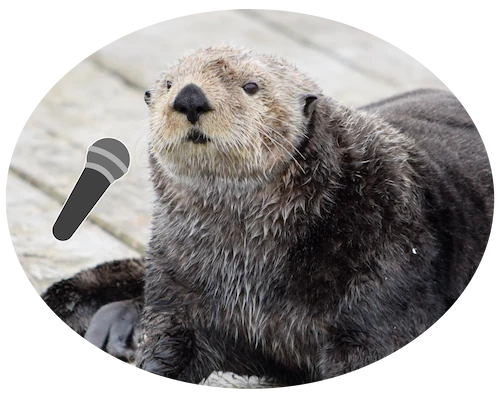
Sea otter: You might know that we sea otters spend a lot of time cleaning our fur so it keeps us warm, and pollutants like oil make that harder for us. But did you know other pollutants can hurt us internally? PFAS are very long-lasting chemicals that could make me or my pups sick. And they have been linked to harmful health impacts on humans as well. Not to mention they can be toxic to my prey, making it dangerous to feed my family our favorite invertebrates, like mussels and crabs. Senate Bill 6163, addressing PFAS in biosolids, would have helped prevent these toxins from contaminating the waters we call home. If it had passed, it would have established a system to monitor the presence of PFAS in municipal sewage waste produced at wastewater treatment facilities. These biosolids are often spread on farms or in forests, and the runoff can contaminate the environment, including the streams where salmon swim and ocean waters where I hunt and forage. Making sure biosolids have lower levels of toxic chemicals is very important. This bill “otter” pass next year!
Would you like to highlight anything else the Seattle Aquarium is still working on?
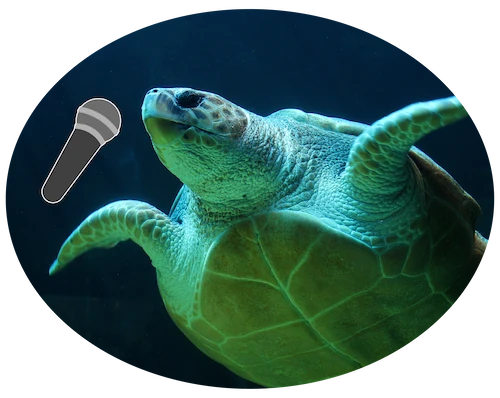
Sea turtle: When I’m hungry, sometimes it’s hard to tell the difference between my food and plastic litter! Plastic bags look a lot like jellyfish. Then there’s all the plastic on the beaches where I lay my eggs. Yuck! So, I’m pleased that the Seattle Aquarium and its partners in the Plastic Free Washington Coalition are going to keep working to pass the ReWRAP Act (House Bill 2049). While the bill ran out of time in this short session, my friends on the Aquarium policy team and their partners are in a “turtle-y” great place for the next session. Together, they’ll make sure Washington can upgrade recycling services through a producer responsibility program for packaging. They’re working toward reducing waste and my—and my fellow sea turtles’—chances of eating plastic. This bill will also address climate change by incentivizing companies to switch to more sustainable packaging alternatives, including reusable options. That’ll help reduce plastic production in the first place. Plastic is made from fossil fuels, and the production process results in a lot of nasty pollutants that no one—human or turtle—wants. I’m confident the ReWRAP Act will pass next year and look forward to shell-ebrating!
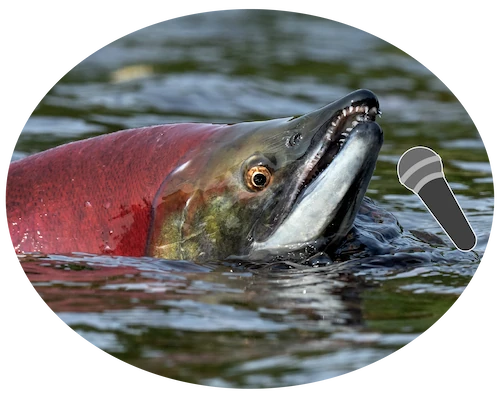
Salmon: The Seattle Aquarium also supported efforts to pass a bill that would allow local elections to take place in even-numbered years (House Bill 1932). Like our salmon journey upstream, where we face great obstacles, there are often barriers for voters too. Voter turnout has been proven to be higher in even years, when national elections take place. Allowing local elections in those years would help ensure they reflect the diversity of the broader population. Plus, national and local elections are both important to elect people who will help pass laws that will better protect the marine environment. I vote for HB 1932 to be put on the legislature’s priority list for next year!
Any last words or requests for your fans here on land?

Salmon: People who care about climate change, pollution and the recovery of animals like me should make sure they are registered to vote before the next election! I encourage everyone to swim on over to votefortheocean.org to check your status, register if needed and find other helpful resources.

Humpback whale: If you’d like to find other ways to support the Seattle Aquarium’s policy work and be an advocate for ocean animals like us, head over to the Act for the Ocean page!
How can we stop sharks from going extinct?
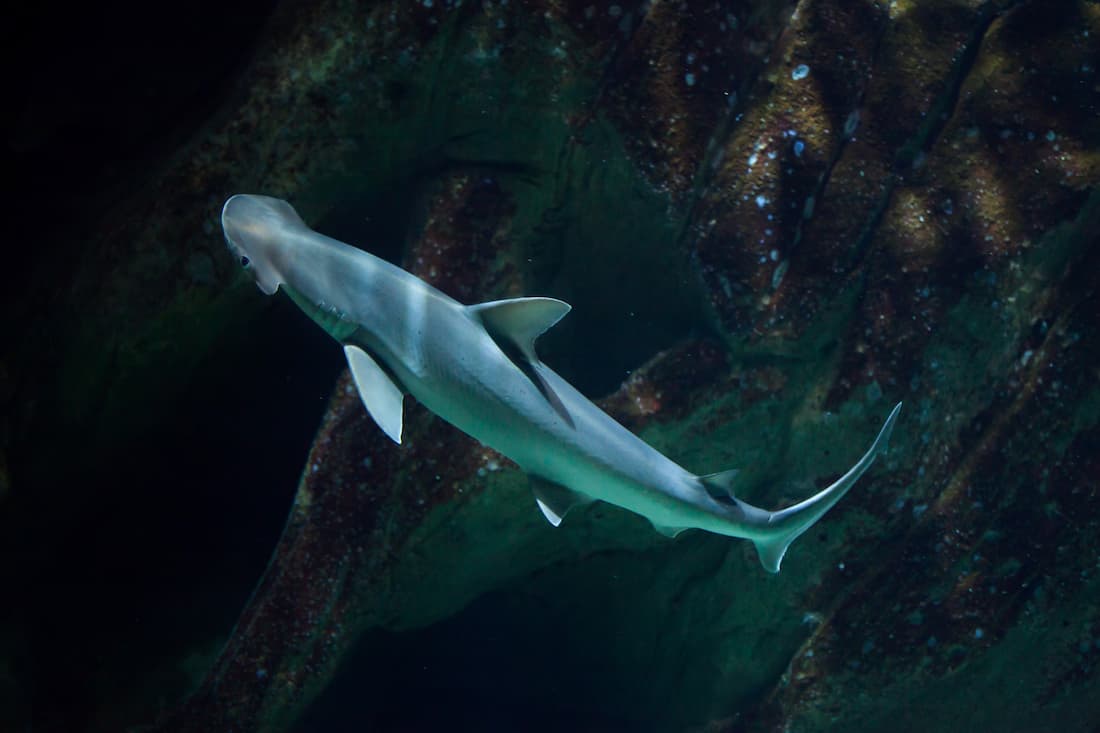
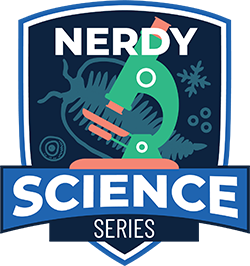
This story is part of our Nerdy Science Series—how we’re using research and technology in service of a healthy ocean.
Sharks have roamed the ocean since before dinosaurs walked the earth. But today, around a third of the world’s 500+ shark species are threatened with extinction. New research co-authored by Riley Pollom of the Seattle Aquarium offers a way forward.
Why are sharks going extinct?
In a word: overfishing. Fishing—legal and illegal—kills around 100 million sharks every year. Sharks are targeted as sources of food and products; they’re also caught as bycatch in the hunt for other species. Because sharks take longer on average than other ocean animals to mature and reproduce, their populations often don’t recover quickly. Sometimes they don’t come back at all.
When shark species go extinct, the loss has a ripple effect. Ocean food webs are delicate, and the disappearance of a major predator can wreak havoc, sometimes causing the populations of other animals in the system to swell or shrink in unpredictable ways. The impact of these big changes often falls on coastal communities who rely on small-scale fishing for food and income. But as we lose species at an unprecedented rate, all of us will be affected.
Aquariums have the knowledge and capacity to play an important role in population management when things get dire. There’s a point of no return, and we need to avoid it.
Riley Pollom, species recovery program manager, Seattle Aquarium
A clue on how to turn the tide
A team of researchers that included Riley analyzed shark populations throughout the Western Atlantic Ocean over decades.
The team’s newest paper, “Conservation successes and challenges for wide-ranging sharks and rays,” focuses on 26 wide-ranging coastal sharks and rays in the Western Atlantic. All are on the IUCN Red List of Threatened Species. For decades, the Western Atlantic has faced a heavy demand for fishing. And sharks there have suffered, often as bycatch in the industry.
But—as the research team found—sharks in the Northwest and Western Central Atlantic are now making a comeback. In fact, some species that were on the verge of collapse in the 1980s and 1990s are now at stable or even growing populations.
Meanwhile, the situation is very different in the Southwest Atlantic. There, almost all populations of shark species—including many of the same species that are recovering in other regions—are still in trouble.
What’s fueled the difference? The answer, researchers found, is strong fisheries management.
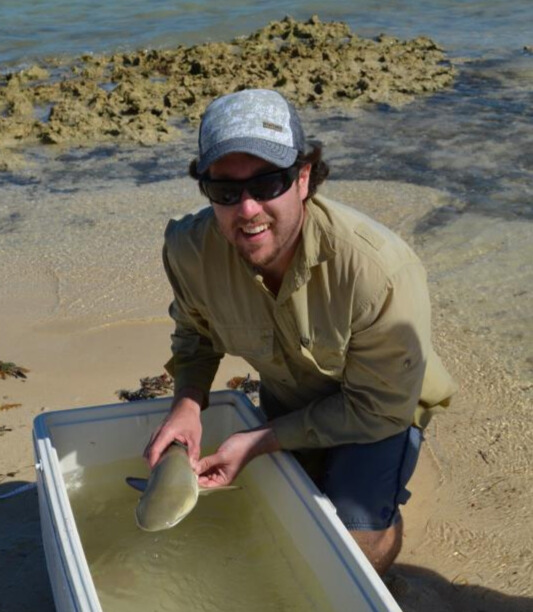
Fisheries management refers to setting, enforcing and monitoring strict limits on how many animals can be caught, where and when they can be caught, and other important rules. Where these practices are robust, like the Northwest and Western Central Atlantic, shark and ray populations are rebounding. Where they are weak or nonexistent, many species are on the verge of extinction or heading that way.
“If strong fisheries management measures are implemented elsewhere, we would expect to see similar recovery,” Riley says.

Avoiding the extinction vortex
As the new research shows, protective measures work. But in some cases, those measures aren’t enough.
In a situation that conservationists call the “extinction vortex,” the population of an endangered species drops so low that even if other threats are removed, the species will not recover and may still go extinct. That’s because when populations are small enough, males and females have trouble finding each other. Those that do risk inbreeding, introducing genetic defects and weakening fitness.
In some cases, direct intervention by people might be the only way to avoid the extinction vortex. Increasingly, aquariums are getting involved in this work.
In 2020, the Seattle Aquarium helped launch ReShark—a global collective to recover threatened shark and ray species. ReShark’s first project is to breed and release Indo-Pacific leopard sharks, which have all but vanished from their home waters off the coast of Raja Ampat, Indonesia. Projects like this are still novel for aquariums—but so far, ReShark has had early success rearing shark eggs born in aquariums for release into their marine-protected home waters. (Read National Geographic’s coverage.)
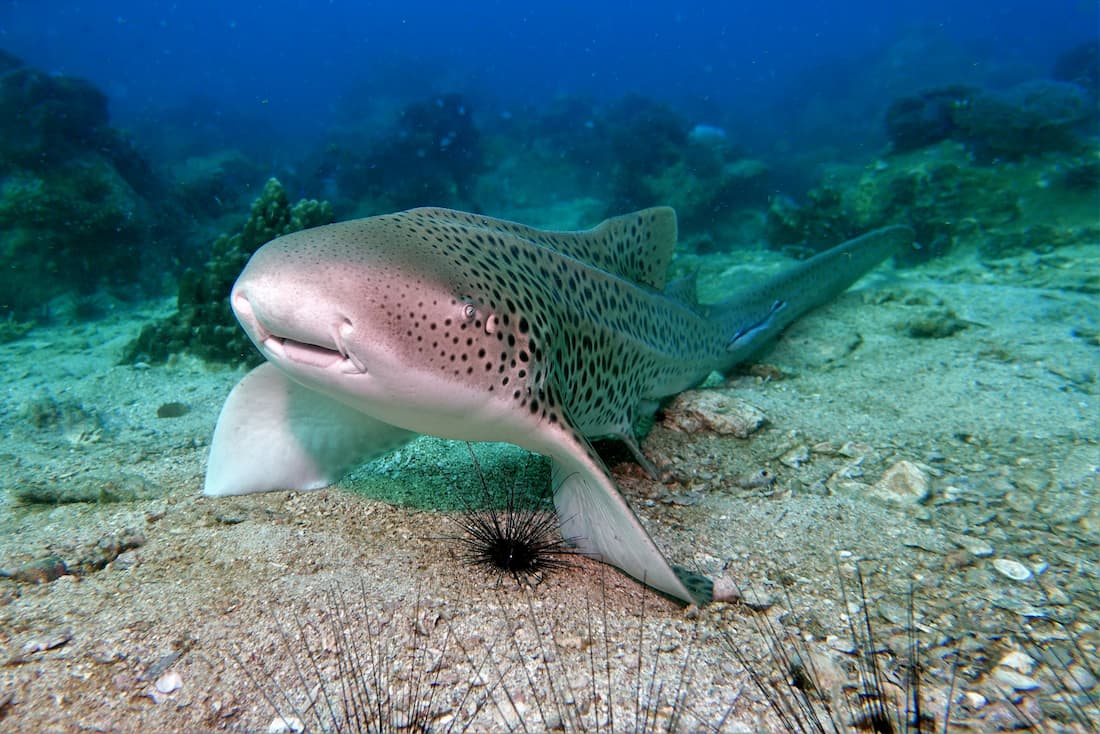
As species recovery program manager, Riley is helping to lead the Aquarium’s growing programs and partnerships to bring back threatened species in Washington State and internationally.
What can individuals do?
Wherever you live, “Vote with the ocean in mind,” Riley says. “Learn and understand politicians’ stances on ocean policies and fisheries management policies.” When we’re informed, we can advocate for setting and enforcing strong fisheries management. Join the Aquarium’s email list to receive alerts on how you can support our state and federal advocacy on behalf of the ocean.
Unwrap the future: Tom Ford Plastic Innovation Prize winners announced
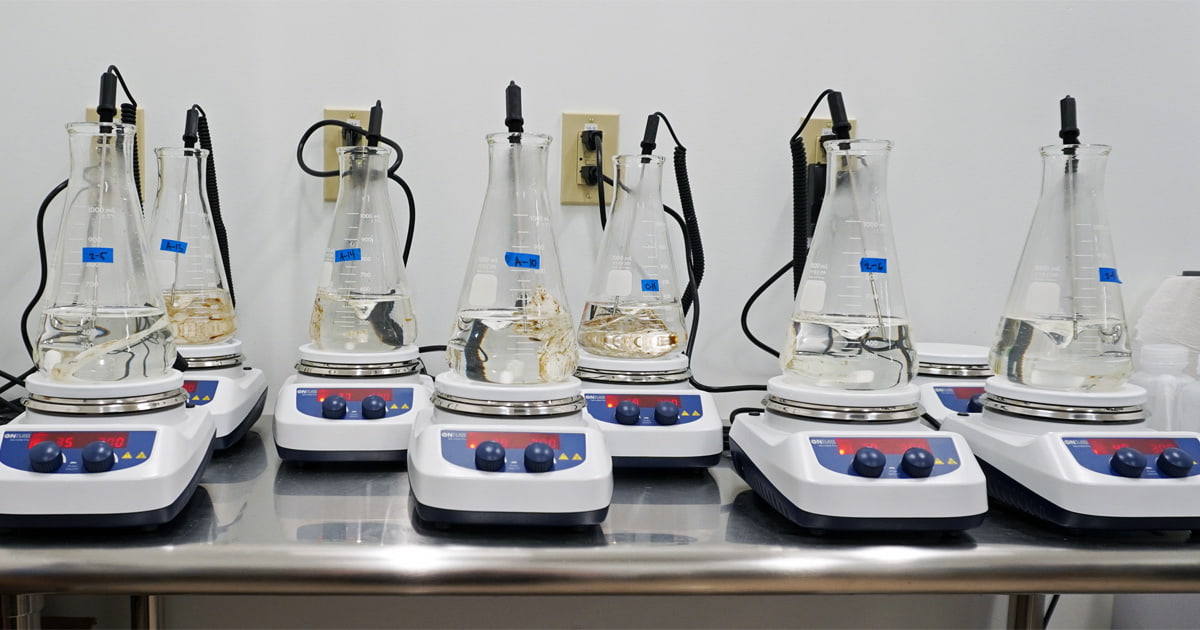
Drum roll, please: The TOM FORD Plastic Innovation Prize powered by Lonely Whale just announced the winners of their global competition to develop a scalable and biologically degradable alternative to thin-film plastic polybags.
A bit of background: Tom Ford is one of the most influential names in fashion, an industry that uses almost 180 billion thin-film plastic polybags each year. It’s not yet estimated how many are used across other industries—but what is known is that thin-film plastics are nearly impossible to recycle and make up a full 46% of all ocean plastic pollution, or approximately 5 million metric tons. To help put that number in perspective, a single metric ton is equal to 2,205 pounds!
Understanding the deep and urgent need for more sustainable and nontoxic alternatives to thin-film plastics, Tom Ford partnered with Lonely Whale to launch the competition in 2020. Last spring, eight companies were named as finalists.
Each submitted their thin-film plastic alternatives for testing to determine which would meet both consumer needs—durability, flexibility and scalability—and undergo quick, safe degradation in environmental conditions. Their performance was compared to two controls: low-density polyethylene plastic film and brown kraft paper. Testing was conducted at two sites: the Seattle Aquarium and the University of Georgia’s New Materials Institute.
A rigorous—and wet!—testing process at the Aquarium
Our testing was primarily focused on biological degradation, to better understand how the materials behave in both the temperate marine environment and an organism’s internal environment—in other words, in an animal’s stomach—if they aren’t disposed of properly and end up in the ocean.
Our team of marine plastic scientists and scientific divers conducted testing in two locations between April and December of 2022. One was off the back of our pier, in the temperate waters of Elliott Bay (with temperate waters representing the vast majority of the planet’s marine waters) at two different depths: near the surface, and near the bottom.
The other was our Clean Seas research laboratory, using first-of-its-kind modeling designed to approximate the effect of the materials on the health and well-being of marine mammals, specifically gray whales, if the materials were ingested.
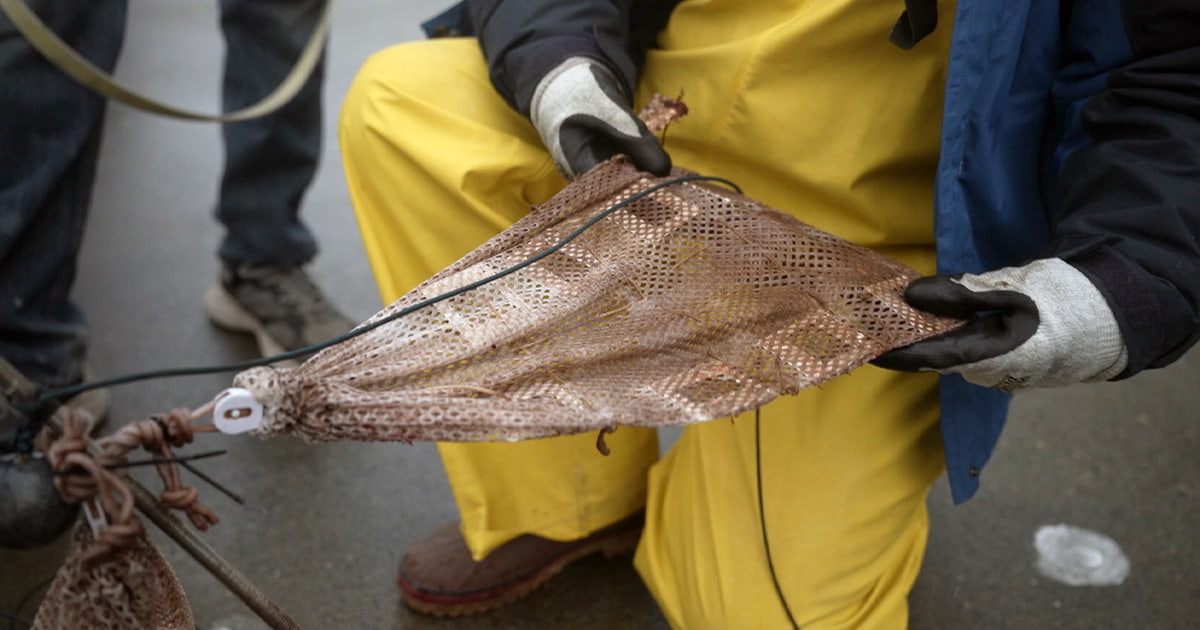

And the winners are...
Test results were written into a final report and delivered to the prize’s scientific and technical advisory board—which included our own Vice President of Conservation Programs and Partnerships Dr. Erin Meyer—and team of judges, who determined the winners.
In first place is the American company Sway; with Zerocircle, based in India, in second; and Notpla, based in London, in third. All three developed seaweed-based plastic alternatives. As described on Sway’s website, seaweed grows up to 60 times faster than land-based crops and can sequester up to 20 times more carbon per acres than forests, and cultivating it is inexpensive, requires no pesticides or fertilizers, and uses little equipment.
The winners will collectively receive a $1.2 million dollar prize purse—as well as continued support from Lonely Whale and the early adopter coalition, including companies such as TOM FORD, Nike, Stella McCartney and J. Crew. Coalition members have agreed to test the winning materials within their supply chain, making a real difference right now.
What can individuals do?
Not a major fashion designer or a research scientist? You can still help! Here are a few ideas:
- Pick up litter on a local beach or, better yet, organize a group of friends or family members to join a local beach cleanup.
- Switch to reusable dishes and utensils. Bring your own reusable mug or bottle when you get coffee or water. Skip the plastic utensils and straws when you get takeout food.
- Choose products with less packaging. Pay attention to how much incidental plastic comes with what you buy. Strive to cut down on your daily plastic consumption, buy used instead of new whenever possible and reward corporations that package responsibly!
- Buy in bulk rather than individually packaged items. Some stores even allow personal containers, like Mason jars, for bulk products including grains and spices.
- Shop local to reduce shipping and packaging plastics.
- If you live in Washington state, contact your legislators and ask them to pass policies to curb plastic pollution and reduce waste. Visit our Act for the Ocean page to learn how to get in touch.
- Sign up to receive our occasional action alerts on ocean-related policy issues like plastic pollution.
Two new policies to reduce packaging waste and plastic pollution
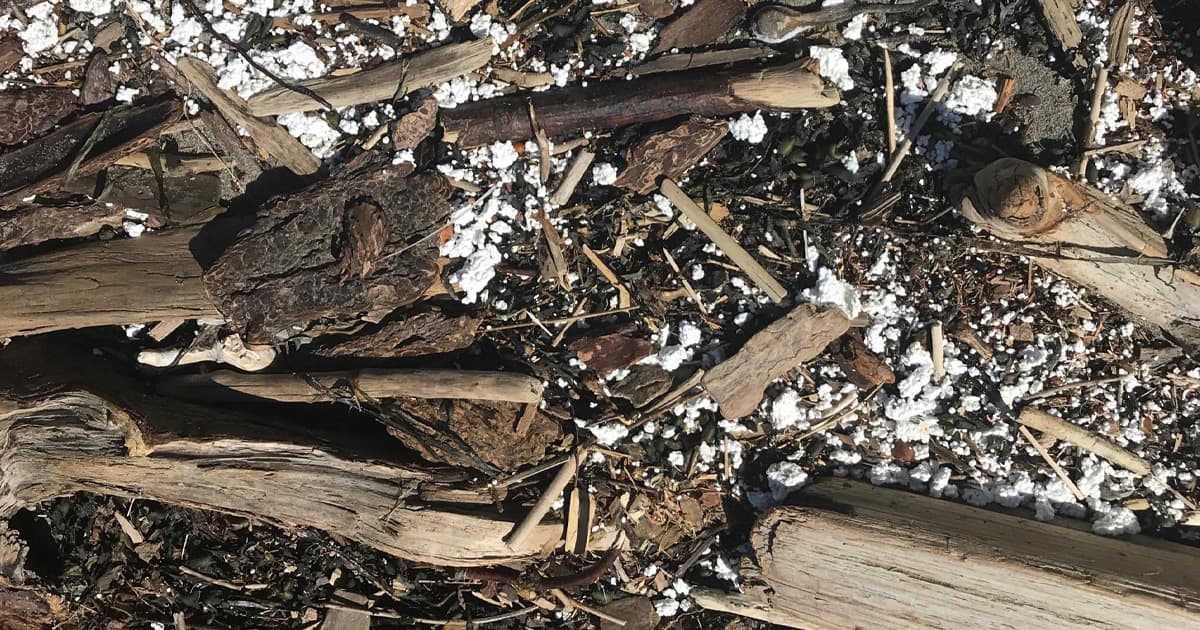
The Seattle Aquarium has been working to reduce sources of plastic pollution in the environment—in 2020 we helped pass the Reusable Bag Bill to eliminate thin, single-use plastic bags in Washington state and in 2021 we worked with our partners to ban certain expanded polystyrene foam products like recreational coolers and packing peanuts.
This year, two of our top priorities for the 2023 Washington state legislative session aim to address the problems of recycling and packaging waste (SB 5154/HB 1131) and plastic pollution (HB 1085).
Modernizing and transforming our recycling system
The Washington Recycling and Packaging (WRAP) Act (SB 5154/HB 1131) will establish a producer responsibility program which will reduce unnecessary packaging and paper, fund statewide recycling services, and ensure that materials are actually recycled. Under producer responsibility, companies that make packaging are responsible for the costs, environmental impacts and end-of-life of their products, so the burden doesn’t fall on the end-customer or local government. It’s a proven, successful approach to increase package recycling and the norm in Canada and much of the European Union.
In 2021, Maine and Oregon became the first U.S. states to pass packaging producer responsibility legislation, and Colorado and California joined in 2022. Now, Washington has an opportunity to join them.
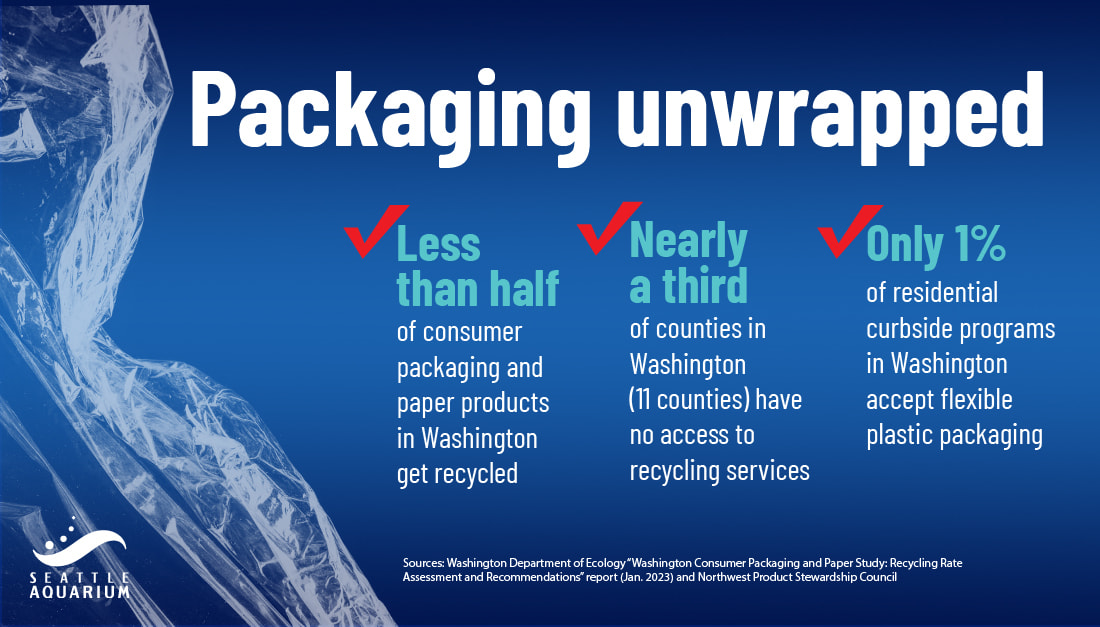
Walking the talk in our gift shop
The Seattle Aquarium’s gift shop, operated by our partner Event Network, has been working to reduce the hard-to-recycle packaging and unnecessary packaging waste they receive by reaching out to their individual vendors to collaborate on more sustainable alternatives. Here are a few examples of packaging switches that our gift shop has made so far:
- Eliminating and replacing plastic bags and plastic foam with eco-friendly or reusable alternatives.
- Removing plastic windows from cardboard boxes that are then recyclable.
- Eliminating “box-within-box” packaging—smaller, lighter-weight packages reduce emissions and pollution associated with transportation.
- Requiring items to be shipped between layers of recycled paper sheets instead of individually wrapped in plastic bags.
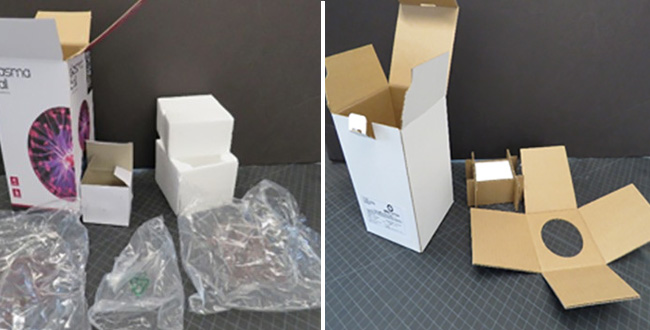
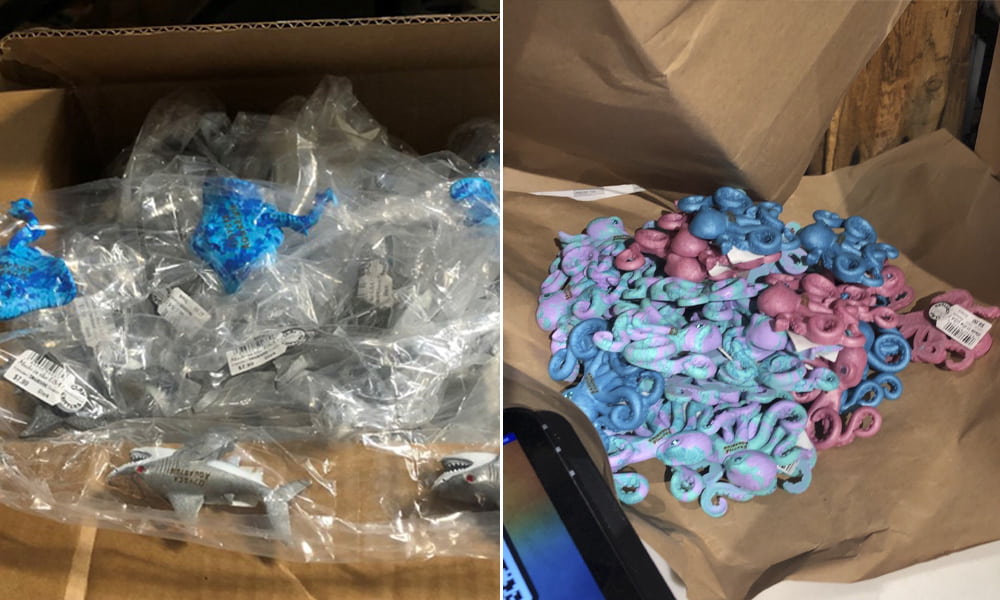
We’re so glad to have Event Network as a partner and sustainability champion, and we’re excited that they have managed to convince producers to switch more than 70 gift shop items to more sustainable packaging. But they have found this way of making change to be time-consuming and resource-intensive. That’s where the WRAP Act can help! The policies in the WRAP Act will address this problem more efficiently statewide by establishing incentives with graduated fees and requiring packaging producers to meet targets associated with things like reusability and recyclability.
Reducing sources of plastic pollution
HB 1085 will make tangible improvements in reducing plastic pollution by addressing three sources of unnecessary and hard-to-recycle plastic waste: single-use water bottles, mini plastic toiletries and thin-walled or soft-shelled foam-filled floats for docks. Read more about the sustainable alternatives required by this bill in our previous blog post on our 2023 Washington State Legislative Session policy priorities.
Take action!
- If you live in Washington, find your WA legislative district and urge your legislators to transform our recycling system by supporting the WRAP Act (SB 5151/HB 1131) and reduce plastic pollution by supporting HB 1085 in the 2023 session.
- Choose products with less packaging. Buy used instead of new whenever possible. Buy in bulk rather than singly packaged snacks and other items. Reward corporations that package responsibly.
- Check out our Act for the Ocean page for additional ways you can help the ocean and marine wildlife!
Thank you to the Washington state legislators who are fighting ocean plastic!
We thank Sen. Rolfes, Rep. Berry and Rep. Mena for being the lead sponsors of these bills to transform our recycling system and reduce plastic pollution, and we also extend our thanks to all of the co-sponsors.
Join us to support quieter waters for orcas
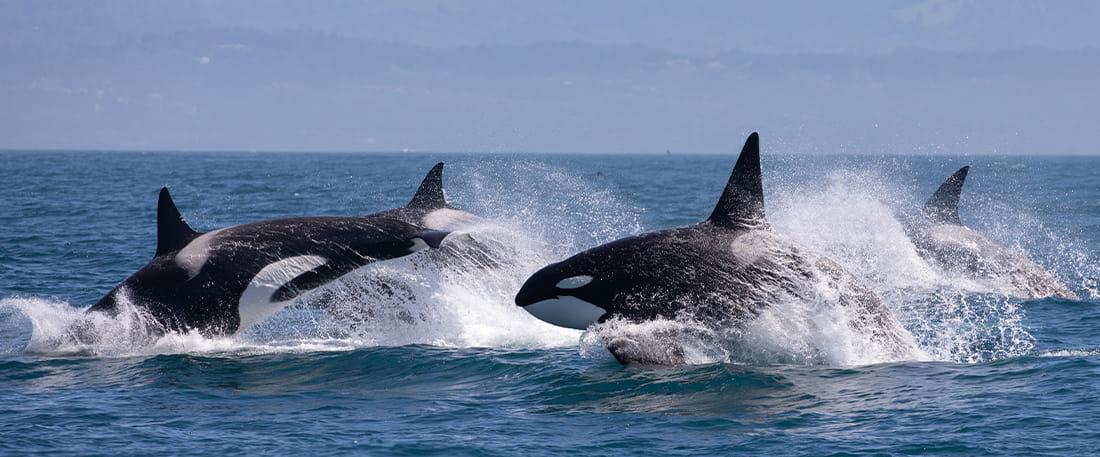
From late October to early January—for the first time—many large ships in Washington waters slowed down for orcas.
How does this help whales? Slower vessels make less noise. When the waters are quieter, endangered Southern Resident orcas have an easier time communicating with each other and echolocating to find and catch scarce salmon. Slow-moving vessels are also less likely to hit a whale, and as a bonus for the climate, the ships’ greenhouse gas emissions decrease.
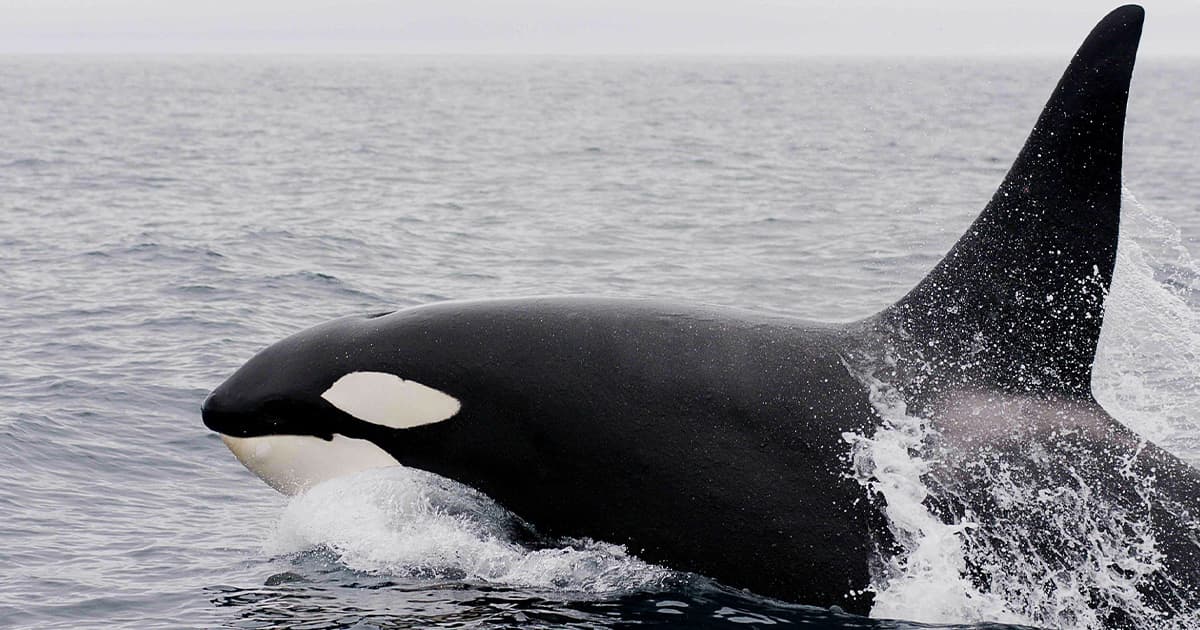
A promising partnership
The voluntary ship slowdown was made possible by a new program called Quiet Sound—a collaborative effort involving government agencies, the shipping industry, the U.S. military, tribal groups, environmental organizations like the Seattle Aquarium and the scientific community—and modeled after a successful program in British Columbia, Canada. The Washington waters trial encouraged vessel operators to reduce their speed in designated transit areas to targets of 11 or 14.5 knots, depending on vessel type. The result? Twenty nautical miles of a quieter, better protected habitat for orcas and other wildlife.
Quiet Sound’s strong start
- Week to week, between 46% and 69% of ships slowed down—a remarkable participation rate for a brand new, voluntary initiative.
- The slowdown window overlapped with three-quarters of the days the Southern Residents were in Puget Sound in 2022.
An opportunity to do more
To continue and even expand this work, Quiet Sound needs additional funding from the Washington state legislature. This legislative session, the Seattle Aquarium is supporting a $700,000 two-year request in Olympia to do just that.
But large ships are just one source of underwater noise. This legislative session, we also have an opportunity to reduce noise from smaller recreational boats. Senate Bill 5371/ House Bill 1145 reflects the latest science-based recommendations from the Washington Department of Fish and Wildlife to create a 1,000-yard buffer around the endangered orcas for all small boats (except active commercial fishing and tribal fishing boats and permitted research boats). This simplifies currently complex regulations and reflects the latest science from NOAA, showing that a Southern Resident orca’s chance of catching a salmon is dramatically reduced when boats are moving at any speed within 1.5 km (1,640 yards). The bill also reduces the cost of a commercial whale-watching license, and boaters would not see any changes in what is allowed for viewing other whale species. The Seattle Aquarium supports this legislation, and we hope you will raise your voice with us.
Ready to help orcas?
- Contact your Washington state legislators and ask them to support two initiatives to reduce noise impacts on orcas: funding for Quiet Sound and Senate Bill 5371/ House Bill 1145. Call the toll-free legislative hotline at 1-800-562-6000 (TTY for hearing impaired 800-833-6388) between 8am and 7pm, Monday through Friday, to leave a message for all three of your legislators at once.
- Observe Be Whale Wise regulations and guidelines, at a minimum, when boating and try to give the endangered orcas even more space. That’ll make it easier for them to forage successfully.
- Learn where to watch whales from shore: There are amazing spots around the region!
- Report whale sightings so mariners can receive alerts when whales are in the area and take action to avoid them. You can report through Orca Network, the WhaleReport app (on Apple and Android) or the Whale Alert app (on Apple and Android).
For more orca inspiration, check out our short film Stories from the Salish Sea: Eba and the Orcas if you haven’t already! That webpage also has ideas for how you can take action to reduce toxic pollution, which will help increase salmon available for the orcas to eat—vital for their recovery.
Speaking up for ocean health: 2023 priorities in the Washington legislature
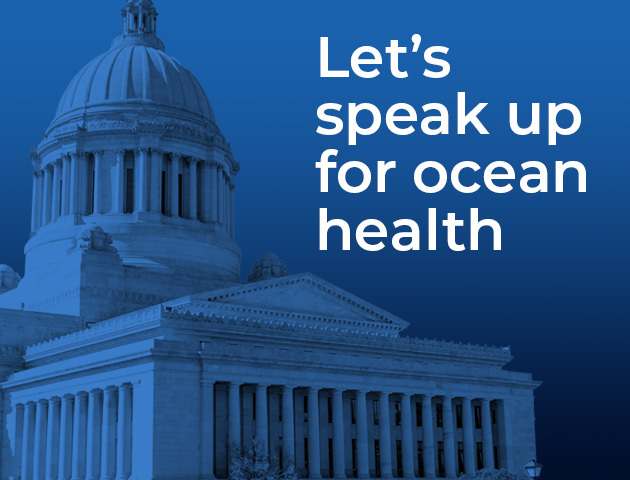
As the Washington state legislative session begins, the Seattle Aquarium is working with partners to advance science-based policies and funding that will protect ocean health. Read on to learn about some of our top priorities for 2023—and how you can take action, too!
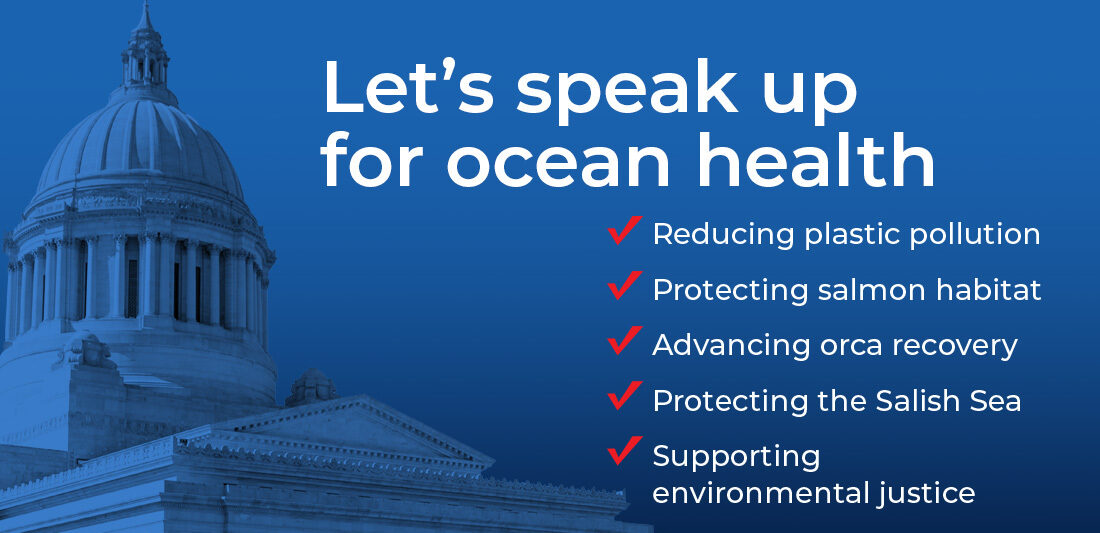
Reducing plastic pollution
Waste, including harmful plastics, accumulates in the ocean and on our shorelines, putting marine wildlife at risk. Single-use packaging represents a particularly significant environmental problem—very little of it is recycled. Packaging producers are best placed to change that by switching to readily available alternatives. We are advocating for bills that will incentivize producers to make such changes; modernize and transform our recycling system; and reduce sources of plastic pollution and waste.
The Washington Recycling and Packaging (WRAP) Act (SB 5154/HB 1131) will:
- Make producers of packaging and paper products responsible for the full life cycle of their products and incentivize them to redesign packaging to be reusable, compostable or recyclable.
- Ensure all Washington residents with garbage collection services also have access to recycling services.
- Remove confusion about what is recyclable and what is not, through a harmonized statewide list—and ensure that what we put in our recycling bins will actually be turned into something new.
HB 1085 will:
- Require bottle refill stations wherever a drinking fountain is required in all new buildings.
- Eliminate small, hard-to-recycle plastic packaging for personal care products (like mini shampoo bottles and soap wrappers) in lodging establishments, in favor of bulk refillable dispensers or non-plastic packaging.
- Ban foam-filled floats for docks to reduce a major source of plastic pollution in lakes and marine waters.
We are also supporting a bill called Right to Repair, which would enable small businesses to repair personal electronic devices like cell phones so people can keep using them instead of buying new ones. This will help limit the need for new materials that may be sourced through harmful practices like seabed mining.
Protecting salmon and nearshore habitat
Salmon are keystone species and critical for Washington ecosystems and communities, as well as for the survival of the endangered southern resident orcas. We are supporting several policies and budget items to recover salmon and protect their habitat, including:
- Filling data gaps about marine shoreline conditions through regular aerial and on-the-water surveys, which will enable strategic, targeted recovery actions to benefit salmon, orcas and the marine food web (SB 5104).
- Increasing investments in salmon habitat restoration, including a $41M state investment in the Duckabush River Estuary Restoration project.
Advancing endangered southern resident orca recovery
This small population of orcas is at risk due to lack of prey, pollution and disturbance from vessels. To help ensure the recovery of this iconic and important species, we are supporting:
- Implementing the Washington Department of Fish & Wildlife’s (WDFW’s) science-based recommendations to give endangered orcas a 1,000-yard buffer from all small vessels so they can forage more successfully (HB 1145/SB 5371).
- Quiet Sound program funding to reduce underwater noise and other impacts from large commercial vessels on endangered southern resident orcas ($350k/year).
- Funding for improving oil spill response preparedness in the San Juan Islands and reducing risks to southern resident orcas from oil spills.
Protecting the health and biodiversity of the Salish Sea
We are supporting WDFW’s $47.6M Restoring Washington’s Biodiversity funding package, including $850,000 per biennium to support pinto abalone recovery.
Working with partners and advancing environmental justice
As a member of the Environmental Priorities Coalition (EPC), we also support the other EPC and Partnership Agenda items including investing Climate Commitment Act revenue strategically and equitably and requiring local governments to incorporate climate resilience into comprehensive plans (HB 1181/SB 5203).
Raise your voice!
- If you live in Washington state, speak up about your priorities for ocean and environmental health. Call the toll-free legislative hotline at 1-800-562-6000 (TTY for hearing impaired: 800-833-6388) between 8am and 7pm, Monday through Friday, to leave a message for all three of your legislators at once.
- Share your WA legislative district with us so we can reach out to you about supporting targeted policy actions where your legislator could cast a key vote.
- Sign up to receive occasional action alerts on ocean-related policy issues.
- Write a letter to the editor to share your view on a bill or budget item that you find particularly important.
- Discover additional ways you can help the marine environment by visiting our Act for the Ocean page.
A new series on protecting and preserving Puget Sound for all
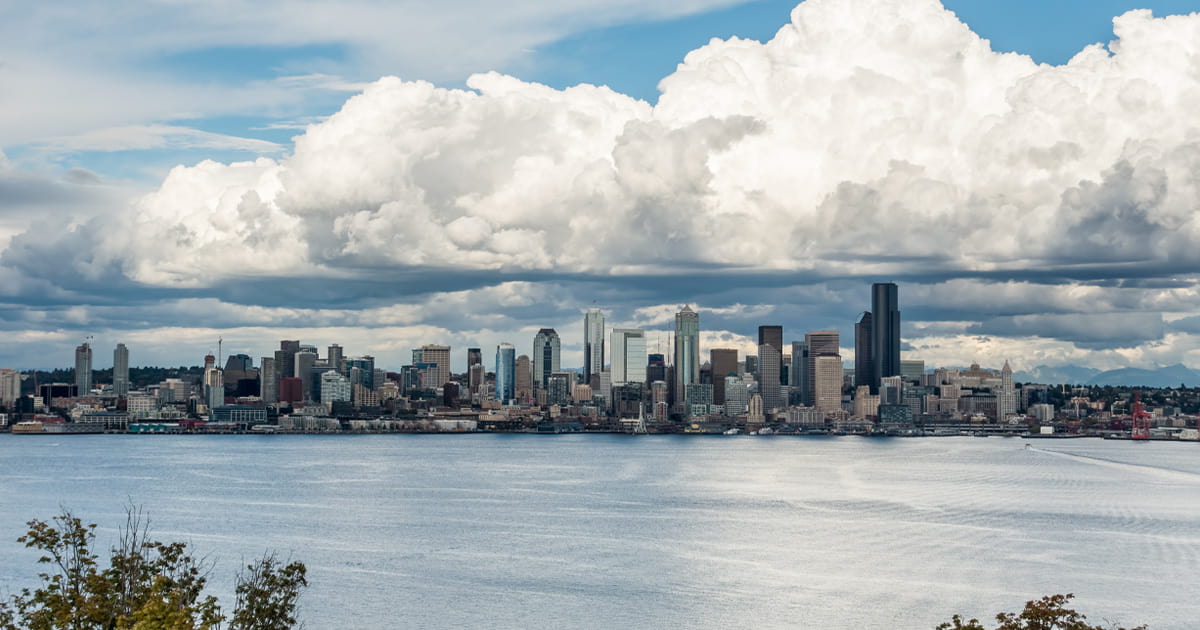
Through a new campaign developed and produced by the nonprofit Sachamama, the Seattle Aquarium is featured alongside other prominent locals engaged in efforts to address threats to the health of Puget Sound—and the impact those threats could have on the vitality of our communities and economy.
Sachamama is a conservation organization grounded in Latinx cultural heritage and working to build support for a clean energy economy for all, and cultivating sustainable attitudes, behaviors and lifestyles. (Sachamama is a word in the Quechua language, which is spoken in the Amazon and South American Andes regions—it means “mother jungle.”) One of their key initiatives involves protecting the health of our ocean and inspiring conservation action and advocacy throughout Latinx communities.
Now we, along with several others, have lent support to Sachamama on a series of editorials focused on the health of Puget Sound and connections to local communities—including the environmental challenges that threaten our ecosystem and the well-being of our region’s residents.
The series showcases five local champions, their connections to the Sound and the environmental benefits the Sound provides for current and future generations. It’s part of a larger effort in support of 30×30, a global initiative to protect and conserve 30% of land and waters, including the ocean, by 2030.
Seattle Aquarium Senior Manager of Ocean Policy Nora Nickum was featured in Sachamama’s first published editorial, devoted to microplastics. The editorial highlighted our research into the prevalence of microplastics in Elliott Bay as well as partnering with the Plastic Free Washington/Washington Sin Plástico Coalition to pass SB 5323 and SB 5022, both of which will reduce plastic pollution in our local waters. Nora also participated as a panelist in Sachamama’s Facebook Live event focused on microplastics in Puget Sound. Seattle Aquarium Empathy Fellow Gabi Esparza was featured in the editorial as well, describing the important role of empathy in marine conservation and the Aquarium’s initiatives to increase access and inclusion throughout the community.
Other champions featured in the series include Candace Penn, climate change ecologist with the Squaxin Island Tribe Natural Resources Department; Luis Navarro, director of workforce development for the Port of Seattle; Ruby Vigo, coordinator for the Duwamish River Community Coalition; and Noe Rivera, an owner of Rivera’s Shellfish. All are working, in various ways, to ensure that Puget Sound can continue to be a source of life and livelihood for our communities and future generations. We thank Sachamama for their leadership on this exciting project—and inviting us to participate in it.
Supporting climate resilience: Q&A with Nicole Killebrew and Nora Nickum
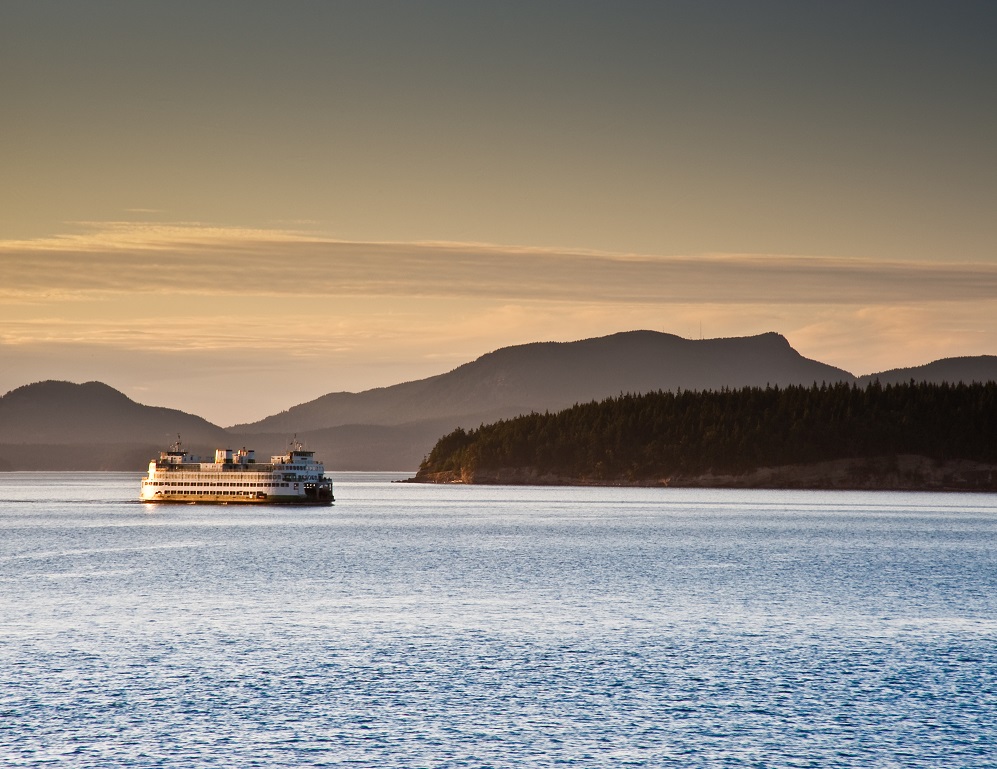
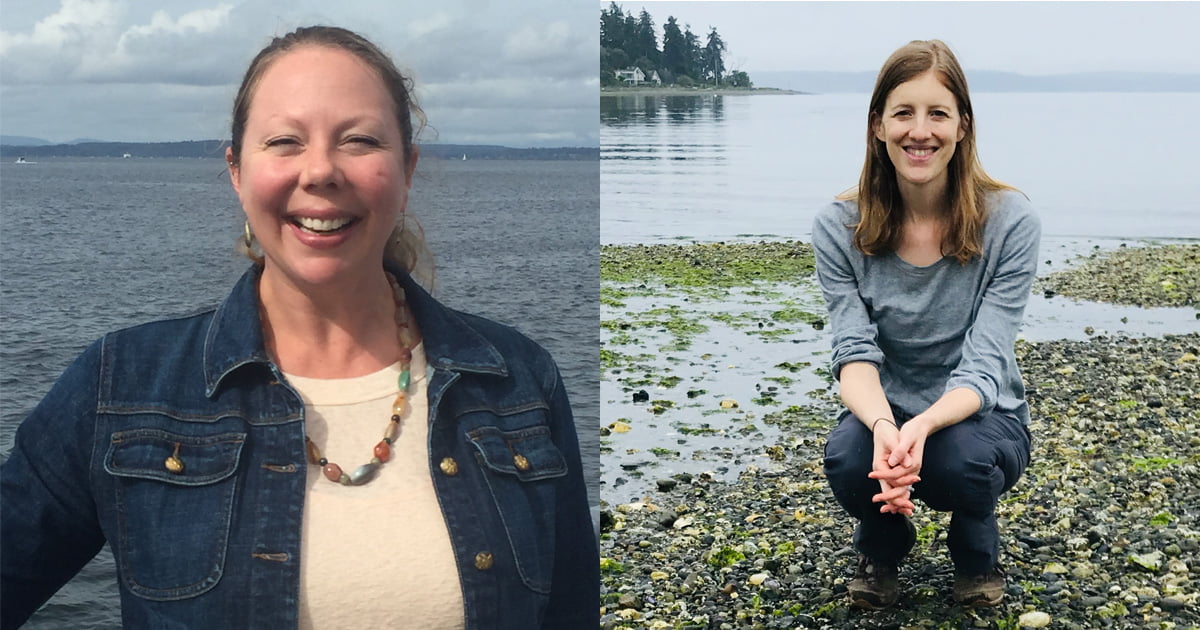
From youth engagement to ocean policy advocacy, the Seattle Aquarium is working to advance climate solutions to avert further ocean acidification and ocean warming and build the resilience of marine ecosystems and coastal communities. Climate change is a multifaceted challenge, with impacts at local, state, national and global scales.
Here, Interpretation Coordinator Nicole Killebrew and Senior Ocean Policy Manager Nora Nickum discuss the challenges of climate change, potential policy solutions and opportunities for hope.
Can you describe some of the ways climate change harms ocean animals and our marine environment?
Nicole: Climate change is caused by burning fossil fuels like coal, oil and natural gas. When we burn fossil fuels in excess, that creates a heat-trapping blanket around the Earth, warming the ocean and land. This fuels extreme weather events, alters where animals can live and travel, shifts food availability, and changes the chemistry of the ocean through a process called ocean acidification. The ocean is like our planet’s heart, and just like a heart circulates blood and regulates the body’s temperature, so does the ocean for our planet by circulating heat, moisture and nutrients. Burning fossil fuels puts stress on our ocean and damages the ocean’s ability to keep the climate stable. These climate impacts increase survival stressors on marine animals around the world in a number of ways. Climate change also puts strain on the resilience of marine ecosystems that animals rely on as their home.
Nicole, how has your work as an educator informed the way you speak about climate issues?
Nicole: I’m involved with the National Network for Ocean and Climate Change Interpretation. That work focuses on identifying the core story of climate change and telling that story so that people feel hopeful and empowered to take action. We need to connect people based on their values and things they already care about to collectively work toward solutions. We also need to keep social and environmental justice in mind—there are differences in how different communities are affected by ocean disruptions and climate change. It comes down to raising our voices and rethinking our reliance on fossil fuels as a primary energy source.
Nora, how can policy solutions help build climate resilience across the United States and the world?
Nora: Taking action to reduce emissions and build resilience is urgent to avoid worsening impacts on human communities and ecosystems. We can all make changes in our daily lives to help with that, like taking public transportation instead of driving. But we also need big changes to happen quickly and at scale. That’s where policy plays a key role.
What types of national climate policies does the Seattle Aquarium support and why?
Nora: We’ll need multiple policy solutions to address climate change—but fortunately, there are a lot of good, science-based ideas out there. There are currently several bills in Congress that the Aquarium is supporting. The Blue Carbon Protection Act (H.R. 3906), for example, would mobilize new funding to protect and restore blue carbon ecosystems—like mangroves, tidal marshes and seagrass beds—and increase long-term carbon storage. The Ocean-Based Climate Solutions Act (H.R. 3764) would prohibit the expansion of offshore oil exploration and drilling on most of the Outer Continental Shelf; promote decreases in shipping emissions; and create a grant program to support climate research and resilience with Indigenous and local knowledge. And the Climate Resilience Workforce Act (H.R. 6492) would ensure there’s a skilled and equitable workforce capable of preparing for and responding to climate change. We also support carbon pricing policies that are science-based and center the voices and needs of those disproportionately impacted by pollution, and we advocate for phasing out fossil fuels as rapidly as possible.
I also want to mention the importance of policies to reduce single-use plastics. Plastic is largely made from petroleum and there are greenhouse gas emissions at every stage of the production process. Reducing single-use plastics will also have the benefit of reducing pollution along shorelines and in the ocean.
There are more policies needed, but these are all meaningful steps in the right direction.
What is a story of hope that has resonated with you?
Nicole: One very tangible example was the Seattle Aquarium’s participation in the Community Solar Program. Through the program, community members could purchase solar panels to put on our roof. They receive credits for renewable energy and the power is part of the Aquarium’s general power grid. The program not only supports renewable energy, but also has an additional psychological benefit: What kind of message does it send to the community to look at the roof of the Seattle Aquarium and see it covered with solar panels?
Nora: I find hope in the many ways we can reduce emissions, build climate resilience and protect biodiversity all at the same time. There are so many good ideas and “shovel-ready” projects out there, we just need to prioritize and invest in them. For example, eelgrass beds can store huge amounts of carbon—keeping it from entering our atmosphere as carbon dioxide. They also protect coastlines during storms. And they provide important habitat for forage fish and juvenile salmon. We can realize all of these benefits by protecting and restoring eelgrass beds. This legislative session, we supported a bill in Washington state to ensure the Department of Natural Resources now has the resources to create a collaborative plan to restore or conserve 10,000 acres of eelgrass meadows and kelp forests by 2040.
Do you have advice for someone interested in raising their voice for ocean-climate action?
Nora: Contact your members of Congress to let them know you want to see urgent action on climate change. You could ask them to support any of the specific policies I mentioned earlier. Most importantly, tell them why you care about the climate crisis, which will make your message personal and memorable.
Nicole: There are many ways you can support renewables, including through community solar programs or rounding up your energy bill to have funds go directly toward renewable energy. Puget Sound Energy and Seattle City Light provide that option, and you could ask your energy company to if they don’t already. Beyond renewables, ask questions and reach out to organizations focused on climate action. See how you can get involved!
What do you hope these solutions can achieve in 10 years? Fifty years?
Nicole: It comes back to the core mechanism of why climate change is occurring—we need to shift away from fossil fuels toward a renewable energy system. Reducing our fossil fuel use is a step in that direction. If we can do that, we’ll see a stabilization in the climate system, ensuring the ocean can continue to function in a way that supports marine life and communities around the world. My hope is that people feel empowered to take action and feel connected to our climate system. Together, we can work toward positive change.
Nora: I envision us on a new path where all communities and ecosystems can be resilient and thrive. We can get there if we speak up, prioritize action and investments today, and see not just the problems we need to fix, but all the benefits we can achieve for people, public health, biodiversity, access to nature and more.
